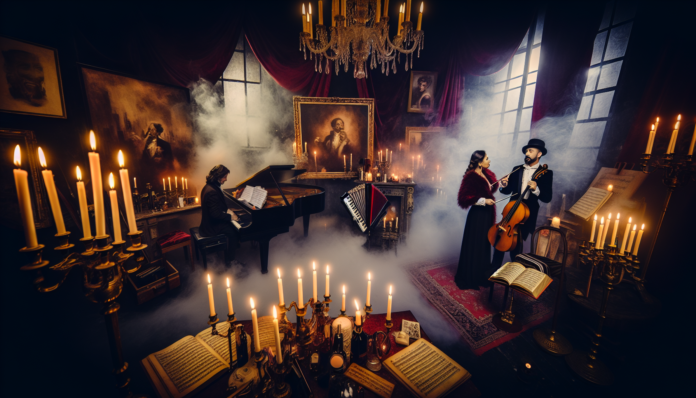Introduction
Gustav Klimt, the Austrian painter renowned for his lavish and evocative works, forged a unique path that intertwined the worlds of art and scandal. Active during the late 19th and early 20th centuries, Klimt’s creations, particularly his erotic art, drew both admiration and condemnation. In a time when Victorian morals dominated, Klimt’s work reflected the tension between burgeoning modernity and traditional values. His most significant pieces, such as The Kiss, showcase a deep exploration of intimacy that offers a window into the scandals of his personal life.
The Scandal
Klimt’s reputation was not solely shaped by his art but also by a series of tantalizing affairs with his muses, many of whom were models for his paintings. Perhaps the most notable was his relationship with Emilie Flöge, a fashion designer and his companion for more than 30 years. Their bond reportedly oscillated between platonic and romantic, sparking whispers throughout Vienna’s artistic community.
Key events include:
-
Model Relationships: Klimt often painted women in states of undress, leading to speculation about his relationships with his models. His erotic depictions stirred debates around sexuality and artistic inspiration. Critics were vocal, stating that Klimt blurred lines between artist and lover, between creation and seduction.
-
Controversial Exhibitions: The first showing of The Beethoven Frieze at the Secession in 1902 faced backlash for its overt sexuality. Critics accused Klimt of pandering to prurient interests.
- Public Reaction: Newspapers like Die Wiener Zeitung often reported on Klimt’s life with a mixture of intrigue and disdain. One notable quote from art critic Julius Meier-Graefe remarked, “Klimt’s brush seeks the naked truth, yet the hearts of many remain cloaked in modesty.”
By examining these reactions, we gain insights into the moral rigidity of the period, dominated by notions of propriety that starkly contrast with contemporary perspectives on sexuality and artistic expression.
Moral and Cultural Analysis
The societal response to Klimt’s scandalous reputation was multifaceted:
-
Criticism and Acceptance: While many derided Klimt for his so-called lasciviousness, others lauded him as a progressive force. Art patrons like Ferdinand Bloch-Bauer engaged with and celebrated his works, propelling him to fame.
-
Consequences: Klimt faced ostracism from conservative circles, yet his allure only grew among the modernists. His ability to navigate these polarized views underscored a broader cultural shift.
- Modern Values: Were Klimt’s exploits and art to resurface today, reactions would likely pivot towards a celebration of freedom and self-expression. The contemporary art scene is more forgiving of artists who embrace eroticism, allowing for candid discussions about sexuality and love without the stigma that clung to Klimt’s brushstrokes a century ago.
In today’s context, Klimt might be viewed not just as an artist but as a pioneer challenging societal norms through his personal and artistic life.

